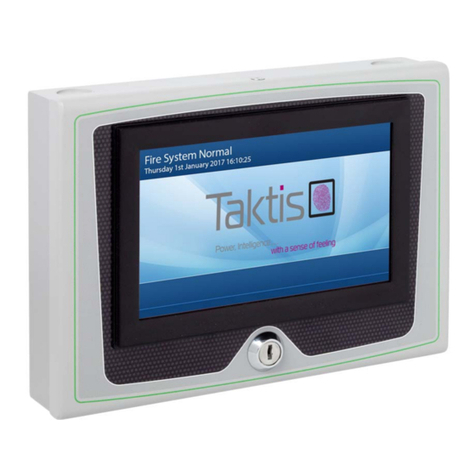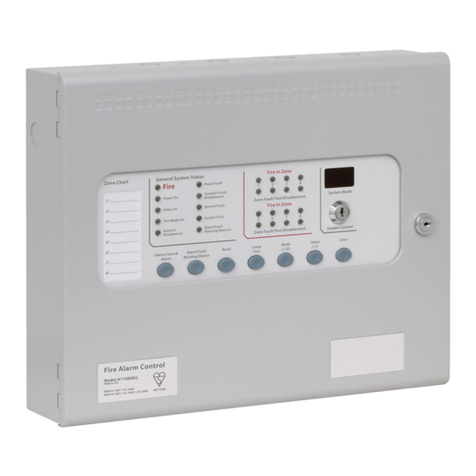Man-1152_K25800_series_Power_Supply_Manual_05 Page 3of 18
*This denotes variants tested & approved by the LPCB
1. General
The KD25800 and K25800 series are combined power supply and battery chargers designed to be used for fire alarm
control and indicating equipment complying with EN54-2 and EN54-4.
To satisfy the requirement of clause 6.4 of EN54-4, for fire alarm Power Supply Equipment mounted in a separate
enclosure to the Control and Indicating Equipment, a separate interface (RPSM2) needs to be fitted inside the PSE
enclosure which provides two transmission paths between the PSE and the CIE to enable one transmission path to
continue to operate in the event of failure of the other.
This board is fitted to models with the KD prefix to the part number. The D denoting that the dual output board is
fitted.
2. Power Requirements
The KD25800 and K25800 series power supplies are designed to operate from mains power supplies of 115V AC or
230V AC.
The maximum input current is 5 Amps.
Mains frequency should be 50Hz or 60Hz.
2.1 Input/Output Electrical Ratings
Mains Input – 115V AC – 230V AC.
Load output voltage -19V DC minimum, 30V DC maximum.
Load output current – 10.25A maximum.
Maximum ripple voltage - 1 Volt.
Imax a – Rated maximum output current which can be supplied continuously – 8A
Imax b – Rated maximum output current which can be supplied while battery charging is not required – 10.25A
Imin - Minimum output current for correct operation = 10mA
Ri max – Maximum series resistance in battery charging circuit before a fault is indicated = 0.4 ohms.
Battery charging output voltage–26.4 V DC (at 40 C) to 28.9 V DC (at -5 C)
Battery charging current - 2.25 Amps maximum.
Fault signals - Switched negative open collector (with respect to load positive) current limited 100mA max and
common volt free relay contact.
Battery disconnected (Low battery shutoff voltage - 19 V (+/- 1 volt))
Mains fail
Battery voltage low/Battery connection high impedance. Low battery voltage = 21 V +/- 1 volt
Earth fault
Charger fault
2.2 Fuse Ratings
Input fuse - F5A 250V TD 20mm. (Replace only with a fuses of the same type).
Load fuse - Self-resetting Polyfuse 10 Amp rated. (Not replaceable).
RPSM2 fuses- FF very fast acting 12A, (Replace only with fuses of the same type).
2.3 Batteries
Rechargeable, sealed lead acid Yuasa NP* or Powersonic*. Maximum capacity 45 Ah.
Maximum current drawn from batteries when mains is disconnected – 11 Amps
Quiescent current in mains failure mode - 50 milliamps.
3. Installation
This product should be installed, commissioned and maintained by trained service personnel in accordance with the
following:
(i) Regulations for electrical equipment in buildings specific to the country of use
(ii) Codes of practice
(iii) Statutory requirements
(iv) Any instructions specifically advised by the manufacturer
Only fire rated and shielded cable should be used.
Note: For LPCB approved installations use only FP200*, 1.5mm2 2 core cable.
3.1 Environmental Considerations
The KD25800 and K25800 series power supplies are mounted in steel enclosures with an ingress protection rating of
IP30. The operating temperature range should not exceed -5°C to +40°C (±2°). Humidity levels should not exceed
95% (non-condensing).
































